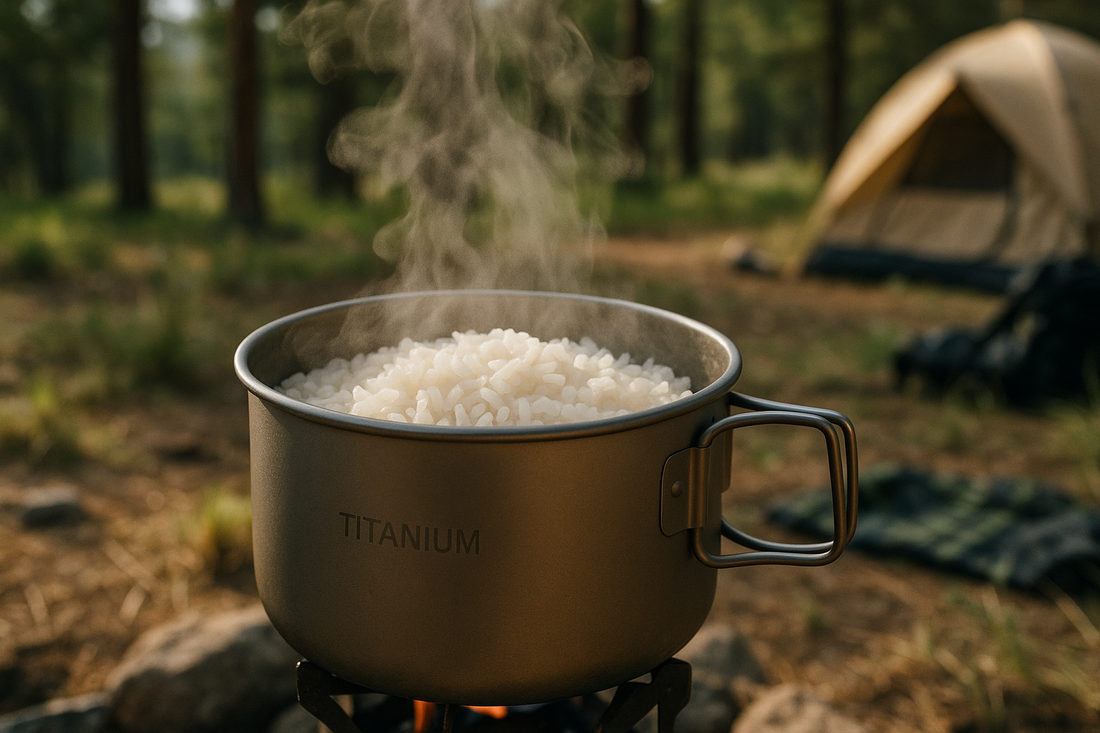
Titanium Cookware in Real Use: Solving Sticking and Open-Flame Challenges
Share
Titanium Cookware in Real Use: Solving Sticking and Open-Flame Challenges
How to Fix Sticking / Can Titanium Be Used Over an Open Flame / Cooking Rice in a Titanium Pot
Titanium cookware can face two main challenges in real-world cooking — food sticking and scorching over open flames. However, both issues can be completely avoided with smart temperature control and structural optimization. Below is a complete, field-tested guide based on the latest 2025 Titanium Cookware Industry Report and real-world performance data.
Tackling the Sticking Problem — The Science Behind It
Titanium’s thermal conductivity is around 16.4 W/m·K, which is only 41.7% of aluminum’s and 8.3% of copper’s. This means uneven heating is the main cause of sticking. Here’s how to fix it:
1. Precise Temperature Control
-
Preheat over medium to low heat for 30–45 seconds to ensure even base temperature.
-
Add ingredients when surface temperature reaches 180–200°C (355–390°F) — at this point, the Leidenfrost effect creates a natural steam barrier that prevents sticking.
2. Optimize Oil Amount
-
Use 20–30% more oil than you would in a stainless steel or cast iron pan.
This helps form a stable oil film that enhances nonstick performance.
3. Don’t Rush to Flip
-
When cooking eggs or fish, wait until the surface proteins turn opaque before flipping — premature movement almost always causes sticking.
4. Seasoning the Pan (“Opening” the Titanium)
-
Before first use, lightly heat the pan and apply a thin layer of oil.
-
Let it cool, wipe clean, and repeat 2–3 times to create a smoother surface.
Safe Use Over an Open Flame
Titanium is one of the most temperature-resistant metals, with a melting point of 1667°C (3033°F) — far above the 1200°C (2192°F) peak of open flames. Gas stoves, alcohol burners, and campfires are completely safe for titanium cookware.
Safety Tips:
-
Because titanium transfers heat slowly but cools quickly, hot spots can form and cause scorching.
Use a heat diffuser or multi-flame burner to balance heat and reduce temperature variation to within ±20°C. -
Avoid “dry heating” an empty pot for more than 2 minutes to prevent micro-deformation from rapid thermal expansion.
Cooking Rice in a Titanium Pot
According to 2025 test data from the RangeTitan™ Micro-Pressure Titanium Pot, titanium’s micro-pressure circulation improves both texture and flavor.
Recommended Settings:
-
Water-to-rice ratio: 1 : 1.2 (vs. 1 : 1.5 in a standard rice cooker)
-
Cooking pressure: 0.1–0.3 MPa — improves heat uniformity by about 35%
-
Energy savings: up to 40% shorter cooking time (about 15–20 minutes total)
With an adjustable steam-release valve, you can fine-tune moisture levels for perfectly fluffy, aromatic rice every time.
1GramLighter Expert Rating
Purchase Priority: ⭐⭐⭐⭐☆
✅ 45% lighter than stainless steel of the same size (density: 4.5 g/cm³)
✅ Highly corrosion-resistant, releases no harmful metal ions even after years of use
✅ Coating-free surface — safer to clean and dishwasher-friendly
Pro tip: Combine with physical nonstick techniques above for the best cleaning and cooking experience.
